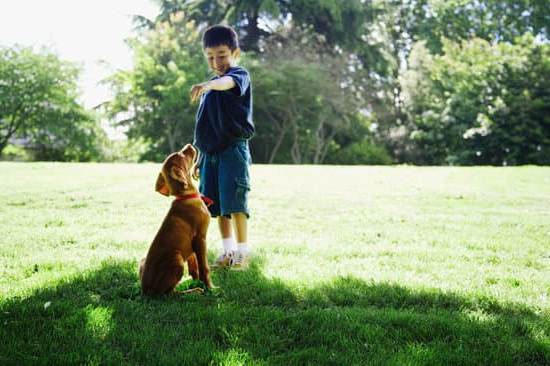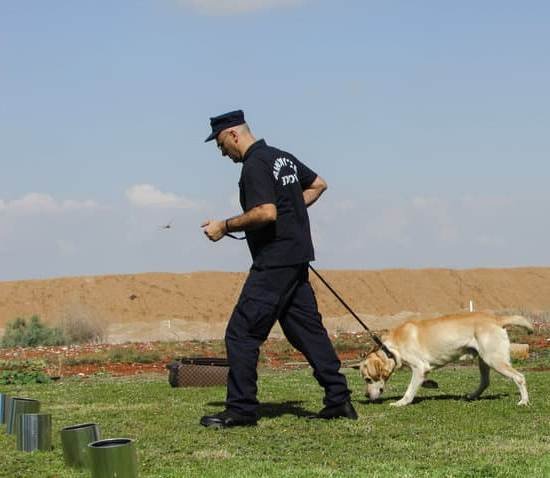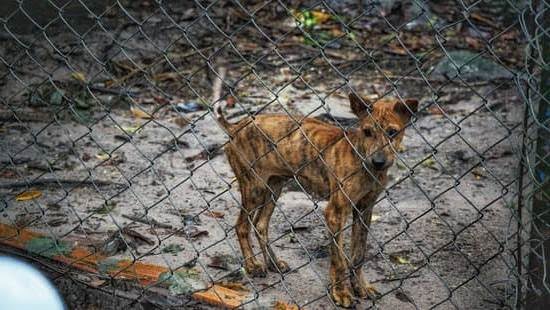Protection dog training is crucial for pet owners who seek to have a well-behaved and protective canine companion. It involves teaching dogs the necessary skills and commands to keep their owners safe in various situations.
In this article, we will explore the significance of protection dog training, the characteristics of a well-trained protection dog, choosing the right breed for training, basic commands and skills taught, the role of obedience training, advanced techniques, benefits for owners, finding a reputable trainer, and maintaining and enforcing training at home.
When it comes to protection dog training, it is essential to understand the importance of instilling specific behaviors and responses in dogs. This type of training not only provides a sense of security for the owner but also ensures that the dog can effectively protect against potential threats or intruders. Whether it is at home or out in public, a well-trained protection dog can be an invaluable asset.
In addition to discussing why protection dog training is vital, we will also delve into the characteristics of a well-trained protection dog. From loyalty and intelligence to courage and obedience, these traits are essential in creating an effective and reliable protector. Furthermore, we will explore how to choose the right breed for protection dog training as different breeds possess varying temperaments and capabilities when it comes to fulfilling this important role.
Characteristics of a Well-Trained Protection Dog
A well-trained protection dog possesses a unique set of characteristics that make them an essential asset for their owners’ safety and security. These dogs are not only loyal and obedient, but they also possess a high level of intelligence, confidence, and natural protective instincts. Through proper protection dog training, these qualities are further developed and honed to ensure that the dog is able to perform their duties effectively.
One of the key characteristics of a well-trained protection dog is their ability to remain calm and composed in various situations. They are trained to assess potential threats and respond accordingly without becoming overly aggressive or fearful. Additionally, a well-trained protection dog must have excellent obedience and be able to follow commands consistently, especially in high-stress or dangerous environments.
Furthermore, a well-trained protection dog should exhibit strong socialization skills. This means that they can interact with people and other animals in a controlled manner when necessary, yet remain focused on their protective duties. Their socialization helps prevent any unnecessary aggression towards non-threatening individuals while still maintaining vigilance in protecting their owners or property. With proper protection dog training, these characteristics can be effectively nurtured and reinforced, ensuring that the dog becomes a reliable protector for the owner.
In addition, a well-trained protection dog should have physical endurance and agility to actively intervene during threatening situations. This includes swift movement, quick responses to commands, and the ability to assess multiple angles of a situation effectively.
Protention dog training encompasses various physical exercises such as obstacle courses or simulated threat scenarios aimed at developing these qualities in the dogs. When choosing a breed for protection dog training, it is crucial to select one with built-in traits suitable for such tasks as they will greatly aid in developing these essential characteristics for protection work.
Choosing the Right Breed for Protection Dog Training
When choosing a breed for protection dog training, it is essential to consider the characteristics and traits that make a dog suitable for this type of training. Not all dog breeds are suitable for protection work, so it’s important to choose a breed that possesses the right temperament, physical attributes, and instincts necessary for protection duties.
Characteristics and Temperament
Certain breeds are naturally inclined towards protective behavior due to their genetic makeup. Breeds such as German Shepherds, Doberman Pinschers, Rottweilers, and Belgian Malinois are known for their protective instincts and strong guarding abilities. These dogs are loyal, fearless, confident, and have a strong desire to protect their family and territory.
Physical Attributes
In addition to the right temperament, the physical attributes of a dog also play a crucial role in protection work. Dogs selected for protection dog training should be strong, agile, and have good endurance. They should also possess a powerful bite force and be able to intimidate potential threats with their presence alone.
Instincts
The chosen breed should have natural protective instincts that can be developed through proper training. A good protection dog will instinctively assess situations and act accordingly to protect its owner or property.
This natural drive can be further honed through specialized protection dog training programs that focus on developing these innate protective behaviors into reliable skills. By selecting a breed with the right combination of characteristics, temperament, physical attributes, and instincts, owners can lay a solid foundation for successful protection dog training.
Basic Commands and Skills Taught in Protection Dog Training
Essential Commands
In protection dog training, there are essential commands that are crucial for the dog to learn. These commands include “sit,” “stay,” “down,” “heel,” and “come.” These commands form the foundation of the dog’s training and are essential for maintaining control over the dog in various situations.
Bite and Release Training
One of the key skills taught in protection dog training is the ability to bite on command and release on command. This is a complex skill that requires a high level of obedience and control from the dog. The trainer will teach the dog to only bite when commanded to do so, and then to release the bite as soon as instructed.
Alerting Skills
Protection dogs are also trained to have alerting skills, which involve barking or alerting their owners when they detect a potential threat. This can be accomplished through target training, where the dog learns to recognize certain cues or scents that indicate a potential threat. It is important for protection dogs to be able to distinguish between normal everyday occurrences and actual threats.
These basic commands and skills are fundamental in protection dog training. They provide the basis for more advanced training techniques and help ensure that the protection dog is well-prepared to fulfill its role in keeping its owner safe.
The Role of Obedience Training in Protection Dog Training
Obedience training is a crucial component of protection dog training. A well-trained protection dog must be able to follow commands and exhibit self-control in various situations, especially when dealing with potential threats. Through obedience training, protection dogs learn to respond promptly to their handler’s commands, demonstrate good manners, and display calm behavior even in high-pressure environments.
One of the key aspects of obedience training for protection dogs is teaching them basic commands such as sit, stay, come, heel, and down. These commands form the foundation for more advanced protection dog training techniques and are essential for maintaining control over the dog in any situation. Additionally, obedience training helps to build a strong bond between the dog and its owner or handler, fostering trust and cooperation.
Incorporating obedience training into protection dog training also helps to establish clear communication between the dog and its handler. This is vital in ensuring that the dog understands what is expected of it during protective situations. Ultimately, obedience training plays a significant role in shaping a well-behaved and reliable protection dog that can effectively carry out its duties while providing companionship to its owner.
| Aspect | Importance |
|---|---|
| Response to commands | Essential for control in different situations |
| Bond with handler | Fosters trust and cooperation |
| Clear communication | Ensures understanding of expectations during protective situations |
Advanced Training Techniques for Protection Dogs
When it comes to protection dog training, advanced techniques are essential to ensure that your dog is fully equipped to protect you and your family. Advanced training goes beyond the basic commands and skills taught in initial training and focuses on honing the dog’s protective instincts and response in high-pressure situations.
Here are some advanced training techniques used in protection dog training:
- Aggression Control: Teaching the dog to remain calm and controlled in threatening situations, while still being able to respond appropriately to protect its owner.
- Scent Detection: Training the dog to detect and alert their owner to potential threats by recognizing specific scents associated with danger.
- Attack and Release: Teaching the dog to engage a threat upon command, but also to release on command to prevent any unwanted escalation of a situation.
These advanced techniques require a skilled trainer who understands the specific needs and abilities of protection dogs. It is crucial for owners to seek out reputable trainers who have experience in protection dog training and understand the importance of balancing a dog’s protective instincts with obedience and control.
By incorporating these advanced training techniques into protection dog training, owners can have peace of mind knowing that their canine companion is not only protective but also well-trained and reliable in any situation. The bond between a protection dog and its owner is strengthened through this rigorous training, creating a relationship based on trust, respect, and security.
The Benefits of Protection Dog Training for Owners
Owning a protection dog can provide numerous benefits for the owner, beyond just feeling safe and secure. The process of protection dog training provides several advantages for the owners, including:
- Increased Security: Having a well-trained protection dog can significantly increase the security of your home and your family. These dogs are trained to protect their owners from potential threats, which can provide peace of mind and a sense of safety.
- Companionship: Protection dogs also serve as loyal companions to their owners. They often form strong bonds with their owners through the training process, creating a deep sense of companionship and trust.
- Personal Protection: In addition to providing security at home, a protection dog can offer a greater sense of personal safety when out in public. The presence of a well-trained protection dog can act as a deterrent to potential threats or attacks.
- Health Benefits: Research has shown that owning pets, including protection dogs, can have positive effects on physical and mental health. The presence of a loyal and well-trained companion can reduce stress levels and anxiety, leading to overall improved well-being.
Additionally, becoming involved in protection dog training can be an enjoyable and rewarding experience for owners. It allows for bonding with the canine companion while also learning valuable skills in handling and caring for their animal. All these benefits make protection dog training not only beneficial for the safety of the owner but also for their overall quality of life.
Finding a Reputable Trainer for Protection Dog Training
When looking for a reputable trainer for protection dog training, it is essential to do thorough research to find the right fit for both you and your furry companion. A good place to start is by asking for recommendations from other dog owners who have had experience with protection dog training. Additionally, reaching out to local law enforcement agencies or security firms can also provide valuable insight into reputable trainers in your area.
It is crucial to find a trainer who has extensive experience and expertise in protection dog training. Look for someone who has a proven track record of successfully training protection dogs and who utilizes positive reinforcement techniques rather than harsh methods. A reputable trainer should also be knowledgeable about the specific needs and characteristics of different breeds, as well as have the ability to tailor their training approach accordingly.
Before making a decision, it’s important to schedule consultations with potential trainers to discuss their methods, observe how they interact with dogs, and ask for references from previous clients. This will give you a better understanding of their training style and whether it aligns with your expectations for your dog’s protection training.
| Aspect | Recommendation |
|---|---|
| Ask for Recommendations | Seek advice from other dog owners or law enforcement agencies |
| Experience and Expertise | Look for a trainer with a proven track record in protection dog training |
| Schedule Consultations | Meet potential trainers to discuss their methods and observe interactions with dogs |
Maintaining and Enforcing Protection Dog Training at Home
In conclusion, protection dog training is an essential aspect of owning a guard dog. It not only ensures the safety and security of your home and family but also provides mental and physical stimulation for the dog.
A well-trained protection dog can be a loyal and dedicated companion, capable of providing a sense of security and peace of mind for their owners. By investing in protection dog training, owners can harness the natural instincts and abilities of their canine companions, creating a powerful partnership based on trust and obedience.
The characteristics of a well-trained protection dog are evident in their response to commands, their ability to assess situations calmly, and their unwavering loyalty to their owners. This level of training requires dedication from both the owner and the dog, as maintaining and enforcing protection dog training at home is crucial for long-term success.
Consistent reinforcement of commands, regular exercise, and ongoing practice are key components in ensuring that the skills learned during formal training sessions become second nature for the protection dog.
Choosing the right breed for protection dog training is equally important as it sets the foundation for successful training. Different breeds possess varying levels of drive, intelligence, and protective instincts that need to align with the owner’s lifestyle and needs.
Whether it’s basic obedience or advanced specialized tasks, finding a reputable trainer who understands the specific requirements of protection dog training is crucial in unlocking the full potential of these remarkable animals. Ultimately, the benefits of successful protection dog training extend beyond just security; they encompass companionship, mutual trust, and a deep bond between owner and pet.
Frequently Asked Questions
Can I Train My Dog to Be a Protection Dog?
Yes, it is possible to train your dog to be a protection dog. However, it requires the right training, socialization, and temperament evaluation. Not all dogs are suited for this type of work, so it’s important to work with a professional trainer who specializes in protection dog training.
What Is a Level 1 Protection Dog?
A Level 1 protection dog is typically trained for basic obedience and providing an alert bark to signal potential threats. They are not trained for direct engagement or attack but are meant to act as a deterrent and provide a sense of security to their owners.
What Is a Level 4 Protection Dog?
A Level 4 protection dog is highly trained in obedience, agility, and personal protection. These dogs have the skills and temperament to engage and neutralize potential threats if necessary. They are extensively trained in bite work and advanced obedience commands, making them suitable for high-risk security situations.

Welcome to the blog! I am a professional dog trainer and have been working with dogs for many years. In this blog, I will be discussing various topics related to dog training, including tips, tricks, and advice. I hope you find this information helpful and informative. Thanks for reading!





